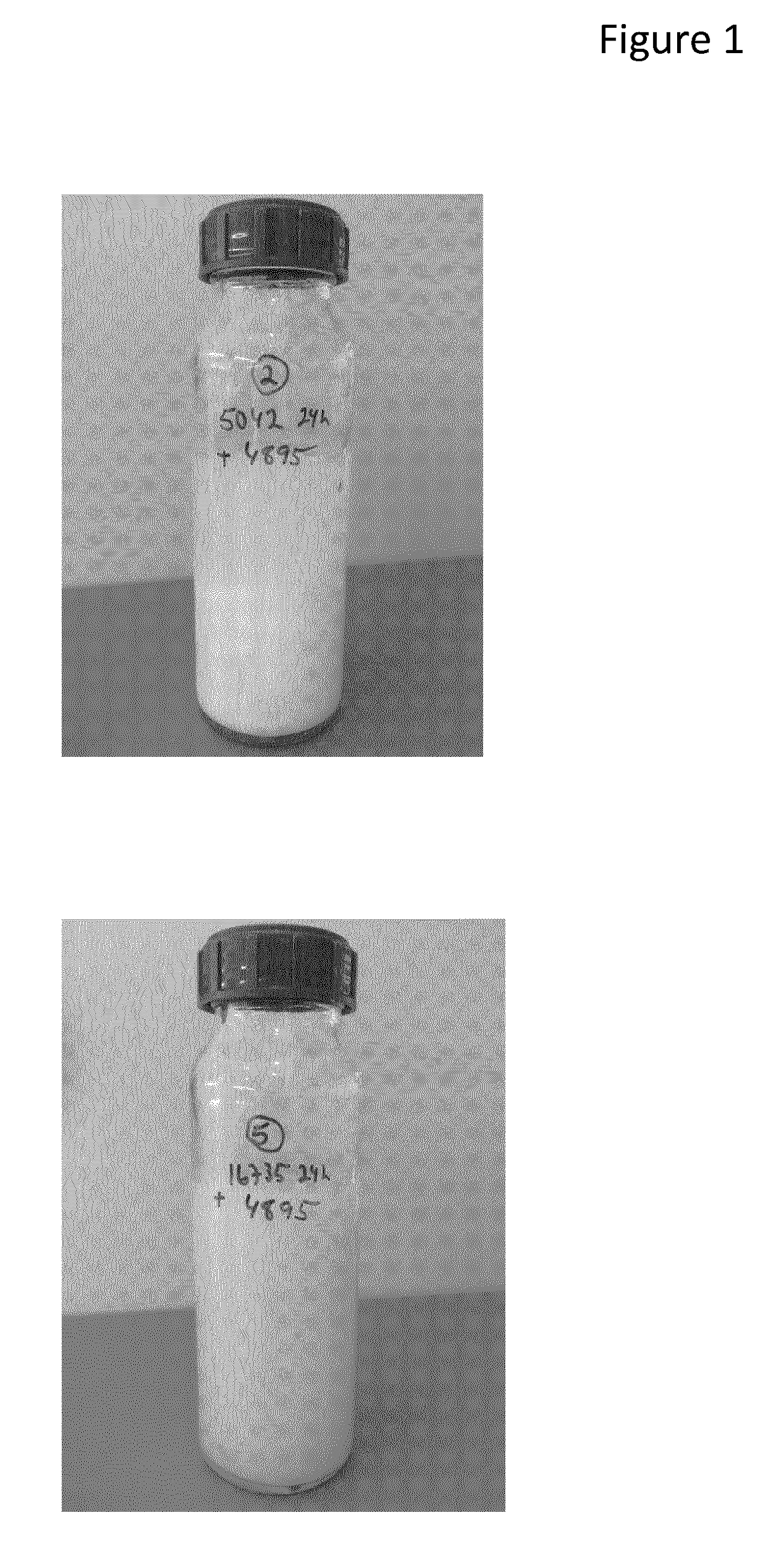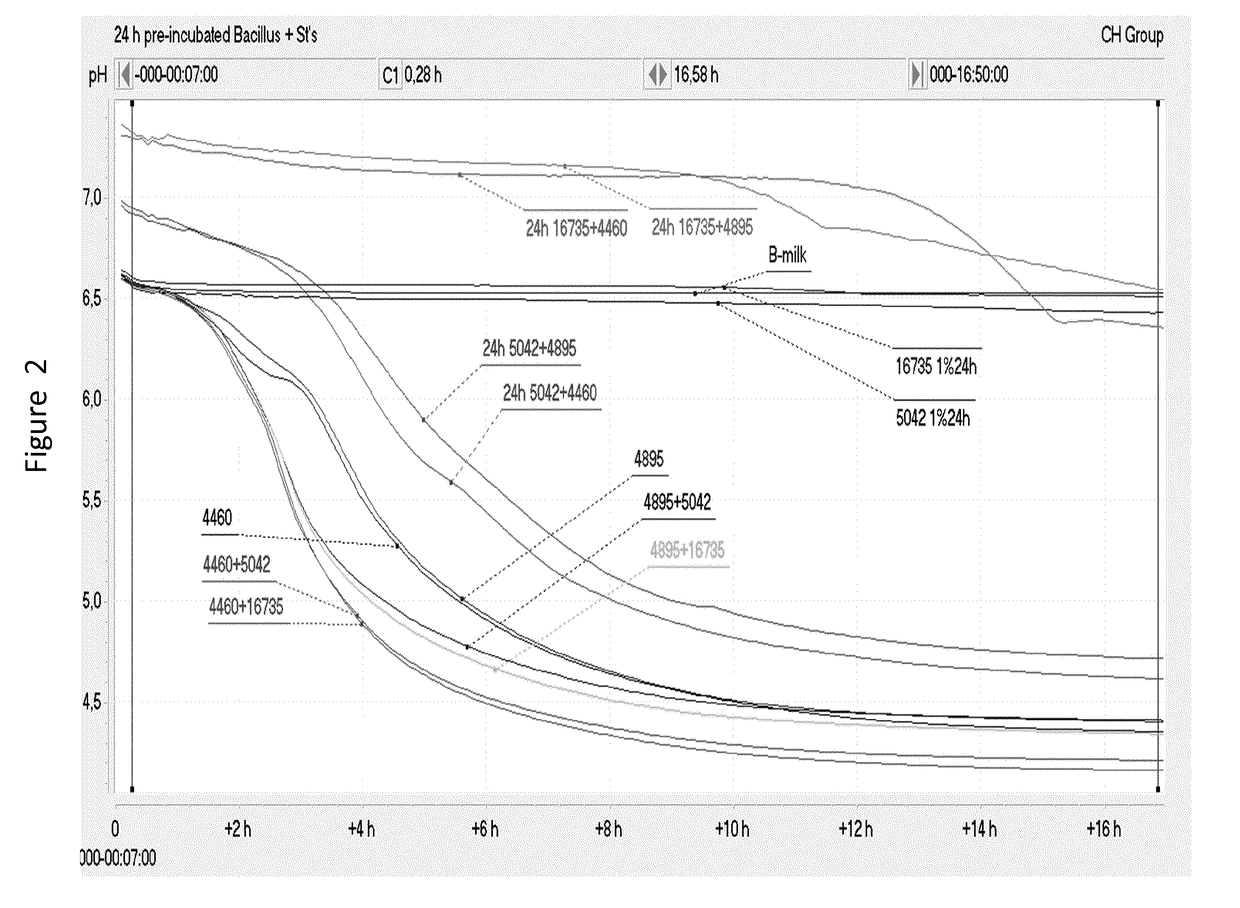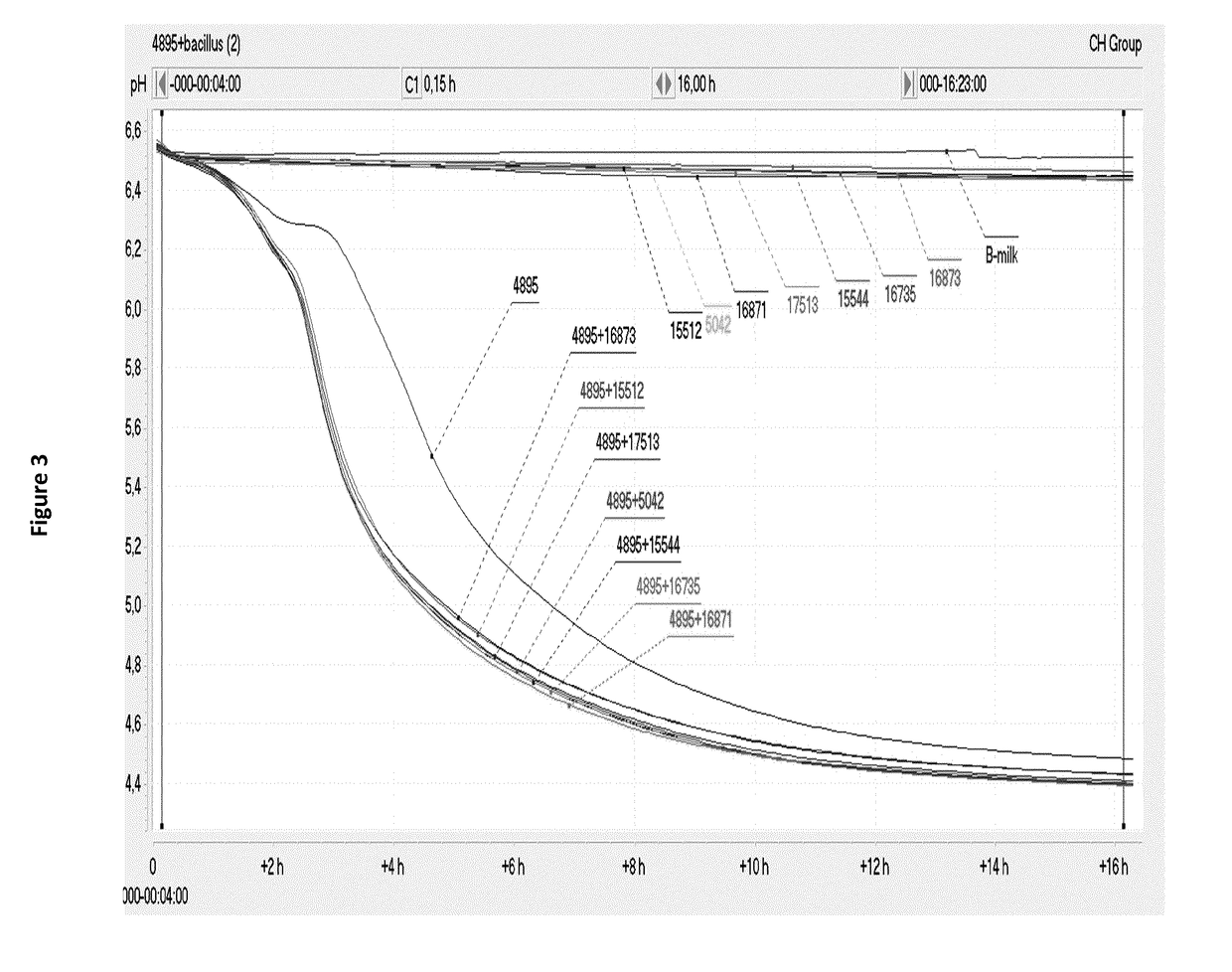Fermented milk inoculated with both lactic acid bacteria (LAB) and bacillus
- Summary
- Abstract
- Description
- Claims
- Application Information
AI Technical Summary
Benefits of technology
Problems solved by technology
Method used
Image
Examples
example 1
ve Experiments—Two-Step Method of the Prior Art Compared with One-Step Fermentation Method of the Invention—B. pumilus and S. thermophilus
[0148]As discussed above (the prior art—e.g. CN103300147A) describes a method for producing fermented milk by using a two-step method. In first step milk is fermented with Bacillus subtilis (48 hours in CN103300147A) and in the second step the lactic acid bacteria are added to the earlier Bacillus fermented milk and lactic acid bacteria fermentation (i.e. lowering the pH—acidification) is then performed.
[0149]As discussed in this working Example 1—the present inventors compared two-step method of the prior art with one-step simultaneous method of the invention.
[0150]Bacillus pumilus Alone:
[0151]Bacillus pumilus CHCC5042 and CHCC16735 were inoculated from frozen ampoules in 3×5 ml BHI broth each and incubated at 37° C. with 150 rpm ON (OverNight).
[0152]4×200 ml B-milk was transferred to 4 shake bottles and the B. pumilus strains 5042 and 16735 wer...
example 2
ve Experiments—Two-Step Method of the Prior Art—B. Subtilis and S. thermophilus
[0213]This example may be seen as similar to Example 1 above—in this example similar experiment was made with Bacillus subtilis strains CHCC15877 and CHCC16871 (in Example 1 was used Bacillus pumilus).
[0214]Bacillus subtilis strains CHCC15877 and CHCC16871 were streaked on BHI agar from frozen ampoules and incubated aerobically at 37° C. ON.
[0215]A single colony from CHCC15877 and CHCC16871 was inoculated in 6 ml BHI broth and incubated at 37° C., 150 rpm.
[0216]4×200 ml B-milk was transferred to 4 shake bottles and the B. subtilis strains 15877sc and 16687sc were inoculated 1% (from ON culture in BHI) in 2 bottles each.
[0217]They were incubated at 37° C. and 150 rpm for 24 hours.
[0218]S. thermophilus CHCC4895 and CHCC4460 were inoculated in M17+2% lactose and incubated at 37° C. ON.
[0219]Acidification Experiment:
[0220]The 24-hours B. subtilis cultures were transferred from the shake bottles to sterile 20...
example 3
imulation of S. thermophilus by Co-Fermentation with Strains from Bacillus subtilis and B. pumilus—One-Step Fermentation Method of the Invention
[0237]Growth Stimulation of S. thermophilus CHCC4895 by the Addition of Strains from Bacillus Subtilis
[0238]The following strains from Bacillus subtilis were inoculated in MRS broth and incubated at 37° C. overnight:
[0239]CHCC3810
[0240]CHCC15877
[0241]CHCC16282
[0242]CHCC19200
[0243]The overnight cultures were centrifuged, and the pellets were resuspended each in 1
[0244]Vol. B-milk (9.5% skim milk, boiled for 30 min at 99° C.).
[0245]S. thermophilus CHCC4895 was pre-grown in M17 with 2% lactose at 37° C., centrifuged, and resuspended in 1 Vol. B-milk.
[0246]For the acidification experiment the resuspended strains were inoculated 1% each in 200 ml B-milk. Acidification was followed at 37° C. in a water bath by measuring the pH with the PC logger overnight.
[0247]1. 1% CHCC4895
[0248]2. 1% CHCC4895+1% CHCC15877
[0249]3. 1% CHCC4895+1% CHCC16282
[0250]4...
PUM
 Login to View More
Login to View More Abstract
Description
Claims
Application Information
 Login to View More
Login to View More - R&D
- Intellectual Property
- Life Sciences
- Materials
- Tech Scout
- Unparalleled Data Quality
- Higher Quality Content
- 60% Fewer Hallucinations
Browse by: Latest US Patents, China's latest patents, Technical Efficacy Thesaurus, Application Domain, Technology Topic, Popular Technical Reports.
© 2025 PatSnap. All rights reserved.Legal|Privacy policy|Modern Slavery Act Transparency Statement|Sitemap|About US| Contact US: help@patsnap.com



